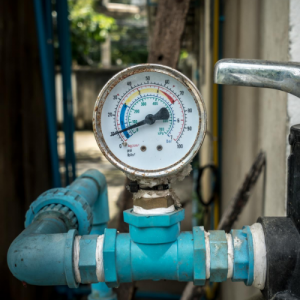Methods to Deal with Low Water Pressure in Your Home
Methods to Deal with Low Water Pressure in Your Home
Blog Article
Listed here on the next paragraphs you will find a good deal of helpful information pertaining to 4 Ways to Troubleshoot Low Water Pressure.

Low tide pressure in your home can be an irritating problem, impacting whatever from bathing to washing recipes. If you're experiencing weak water flow, there are several feasible causes and remedies to explore. In this overview, we'll go over usual reasons for low tide stress and practical steps to deal with the problem successfully.
Introduction to Low Water Stress
Low water stress occurs when the flow of water from your taps, showers, and various other components is weak than normal. This can make daily jobs a lot more difficult and less reliable. Comprehending the causes of low tide pressure is important to finding the best remedy.
Typical Reasons For Low Tide Pressure
Pipeline Obstructions
In time, pipelines can become blocked with mineral deposits, debris, or particles, restricting the flow of water. This is a typical issue in older homes with galvanized steel pipelines.
Rust
Rust within pipes can bring about leaks and lowered water pressure. Rust buildup can constrict water flow, especially in aging plumbing systems.
Faulty Stress Regulatory Authorities
Stress regulators are responsible for maintaining constant water pressure in your house. If they malfunction, it can lead to low tide pressure or unequal circulation throughout the house.
Local Water Issues
Often, the trouble lies outside your home. Community water system problems, such as main line leakages or upkeep job, can momentarily lower water pressure in your location.
How to Identify Low Tide Stress
Inspecting Faucets and Components
Begin by testing the water stress at various taps and components throughout your home. If the concern is separated to certain locations, it might show local troubles.
Inspecting Pipes
Evaluate visible pipelines for signs of leakages, rust, or clogs. Focus on any kind of unusual noises, such as knocking or rattling pipes, which could indicate issues within the plumbing system.
Consulting with a Plumber
If you're unable to determine the cause of low water stress, think about employing a professional plumber to perform a complete evaluation. They can identify underlying issues and recommend appropriate solutions.
DIY Solutions to Take Care Of Low Water Pressure
Cleansing Aerators and Showerheads
Mineral deposits can gather in aerators and showerheads, lowering water flow. Get rid of and clean up these parts consistently to boost water pressure.
Flushing Water Heater
Debris accumulation in the hot water heater can limit circulation and minimize effectiveness. Flushing the storage tank regularly aids eliminate sediment and maintain ideal performance.
Examining Stress Regulatory Authority
Make certain that the pressure regulator is operating appropriately. Readjusting or replacing the regulator can help restore proper water stress throughout your home.
Cleaning Clogs in Pipeline
For small blockages, attempt making use of a plumbing serpent or chemical drainpipe cleaner to clear blockages in pipes. Beware when utilizing chemicals and comply with safety and security guidelines.
When to Call a Specialist Plumber
If do it yourself efforts stop working to resolve the concern or if you suspect significant plumbing troubles, it's finest to look for aid from a licensed plumber. They have the knowledge and devices to deal with complex issues safely and effectively.
Safety Nets to Keep Water Pressure
Normal Maintenance
Arrange routine upkeep for your plumbing system to avoid issues such as rust, leakages, and obstructions. Addressing small problems early can aid avoid even more considerable repair work later.
Setting Up a Stress Booster
Think about installing a stress booster pump to boost water pressure in locations with constantly reduced circulation. This can be especially helpful for multi-story homes or residential properties with high-demand fixtures.
Surveillance Water Use
Be mindful of water usage practices and prevent overtaxing the plumbing system. Straightforward modifications, such as incredible showers and laundry loads, can assist maintain sufficient water stress.
Conclusion
Dealing with low water pressure can be discouraging, however determining the underlying reasons and executing suitable options can recover ideal circulation throughout your home. Whether it's cleaning up aerators, checking pipes, or consulting with a plumber, taking aggressive actions can make sure a steady supply of water for your everyday requirements.
FOUR WAYS TO FIX LOW WATER PRESSURE NOW
Turning on a shower or faucet only to find the water comes out in a sad, slow drizzle is never a good feeling. How exactly are you supposed to wash a pan or take a quick shower when it takes 10 minutes just to rinse off a little soap? The good news is that when your water pressure is bad, there's always a cause: typically one that can be easily fixed. Here are some of the most common causes of low pressure and what you can do to fix the issue:
DEBRIS AND MINERAL DEPOSIT BUILDUPS
If you notice low water pressure from just one or two of the fixtures in your house, the problem likely has to do with debris buildup. Water is full of minerals and other debris, all of which can accumulate in your pipes and on your fixtures. This can cause a blockage that affects how much water flows through. To fix this, try filling a small plastic bag with white vinegar, and use a rubber band to hang it around your showerhead or faucet. Let the head of the fixture soak for a few hours, and the vinegar should loosen the deposits.
WATER LEAKS
Leaks are another common cause of low water pressure. If water is flowing out of your plumbing through a hole or crack before it can reach your fixture, the pressure coming out of the faucet or showerhead will be lower. A plumbing professional is your best bet for finding and repairing a leak in your water supply pipes.
Leaks are another common cause of low water pressure. If water is flowing out of your plumbing through a hole or crack before it can reach your fixture, the pressure coming out of the faucet or showerhead will be lower. A plumbing professional is your best bet for finding and repairing a leak in your water supply pipes.
A VALVE ISSUE
If you have low water pressure throughout your home, check your main shut-off valve to make sure it's completely open. You may also want to see if there's a pressure-reducing valve installed. If there is, have a plumber help you adjust the settings to get the pressure you're looking for.
OTHERS USING WATER
Believe it or not, your low water pressure could be caused by your neighbors. If you notice low pressure at certain times of day, it may be because you and the people living next to you have similar schedules - when everyone is showering at the same time, the pressure will be lower in every home. Low pressure throughout the neighborhood may also be caused by an issue with your municipal water supply. If that's the case, call the supplier to see if they're working on the issue.
https://www.rotorooter.com/blog/water-leaking/low-water-pressure-fixes/

I found that content about 10 Reasons for Low Water Pressure in Your House while browsing the search engines. Enjoyed reading our blog posting? Please quickly share it. Help another person find it. Thank you for taking the time to read it.
Book Report this page